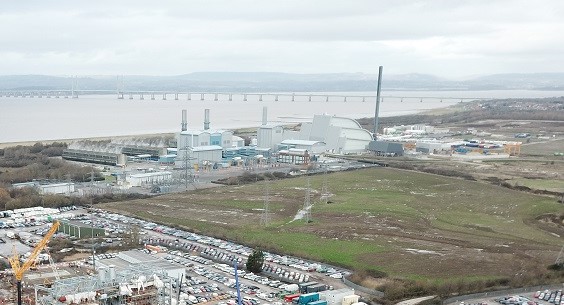CHARTERED INSTITUTION OF WASTES MANAGEMENT
POSITION STATEMENT
Energy Recovery from Waste

CIWM‘s view
This position statement covers CIWM’s views on energy recovery from waste (EfW) by the process of thermal treatment. It does not include treatment of waste by anaerobic digestion.
CIWM believes the need to reduce carbon emissions and to diversify and secure locally sourced energy means that we should exploit the energy value of UK and Ireland generated residual waste streams that are not suitable for reuse, repair, recycling, or must be destroyed.
Recent policy changes towards increased recycling and plastic packaging tax, as well as deposit return schemes coming in Ireland has set in motion changes in the composition of residual waste. They also move the argument away from energy from waste impinging on recycling or other higher hierarchical stages. The top end of the hierarchy is important and energy from waste is only relevant for those streams that cannot be reused, repaired, recycled or must be destroyed.
What is it?
Energy recovery from waste can be split into incineration and emerging alternative thermal treatments (EATTs). Both techniques are defined as ‘other recovery’ under the waste hierarchy. EATTs include pyrolysis and/or gasification to produce a secondary resource such as syngas for use as a fuel.
Pyrolysis is the thermal decomposition of organic materials at high temperatures in the absence of oxygen. During treatment, the material thermally decomposes into synthetic gas and charcoal. Synthetic gas (syngas) can be used to produce electricity or synthetic fuel.
Gasification is when the temperature exceeds 600oC. The gasification stage begins, leading to the reformation of hydrocarbons and fixed carbon residue into syngas (mainly CO and Hydrogen).
Combined heat and power (CHP) is a highly efficient process that captures and utilises the heat that is a by-product of the electricity generation process. CHP systems are highly efficient, making use of the heat which would otherwise be wasted when generating electrical or mechanical power.
The issues
CIWM believes the need for EfW CHP schemes is often at odds with planning policy and environmental permitting requirements which discourage the location of EfW and other waste facilities close to areas of population, which is in conflict with the desire to find heat consumers.
Government should encourage development of EfW in settings where there is greater potential to make connections to significant heat consumers and place positive obligations upon developers to ensure developments near to EfW plants are designed with the ‘built in’ potential to connect to a CHP heat network.
There needs to be acknowledgement from Governments and local authorities that due to the capital investment required for the development of EfW plants in the UK, there is a need for support by a long-term waste contract to justify the capital investment by industry in the current economic climate to banks and other funders. The Government should be encouraged to support smaller merchant EfW developments so that energy and heat recovery from UK and Ireland residual, municipal and C&I wastes are maximised.
CIWM is fully supportive of policy changes that extract the maximum recycling out of residual waste streams, but they will have an impact on the energy from waste calorific value, that will need to be taken account of.
Energy from Waste
from 2028 will be included in the UK Emissions Trading Scheme (ETS) as part of government policy to reduce emissions from waste. Emissions Trading Scheme is a tradable permit system, where an allowable overall level of pollution is established and allocated among firms in the form of permits. Firms that keep their emission levels below their allotted level may sell their surplus permits to other firms or use them to offset excess emissions in other parts of their facilities (1) .
This will require changes and improvement to monitoring at facilities, to meet increased stringent controls.
The background
Within the European Directive on Industrial Emissions Article 3 (integrated pollution prevention and control 2010/75/EU) a waste incineration plant is defined as “all stationary or mobile technical unit and equipment dedicated to the thermal treatment of waste, with or without energy recovery of the combustion heat generated, through the incineration by oxidation of waste as well as other thermal treatment processes, such as pyrolysis, gasification or plasma process, if the substances resulting from the treatment are subsequently incinerated.” Furthermore, within the European Directive on Waste and Repealing certain Directives Article 3 (2008/98/EU) recovery is defined as “any operation the principle result of which is waste serving a useful purpose by replacing other materials which would otherwise have been used to fulfil that function, in the plant or in the wider economy.”
Incineration under the Waste Framework Directive 2008/98/EU Annex I can be either D10 Incineration on land (Disposal Operation) or Annex II R1 Use principally as a fuel or other means to generate energy (*) (Recovery Operation).
R1 is not the energy efficiency of the plant, which is > 80%, but the efficiency of the recovery by the plant and of it being used by clients (and the plant). Expressed as a decimal ratio 0.6 or 0.65. There is
guidance on how to calculate, apply for and keep R1 recovery status .
Incineration is an already proven and bankable technology in the UK and Ireland. All incinerators recover energy in the form of electricity and/or heat, when they recover both they are referred to as using ‘combined heat and power’ (CHP). Conversion to cooling may also be an output, whilst development of fuels from waste, for example hydrogen, is currently under development.
CIWM Position Statements represent the Institution’s views at a particular point in time. They remain under constant review, in the light of new experience and research.